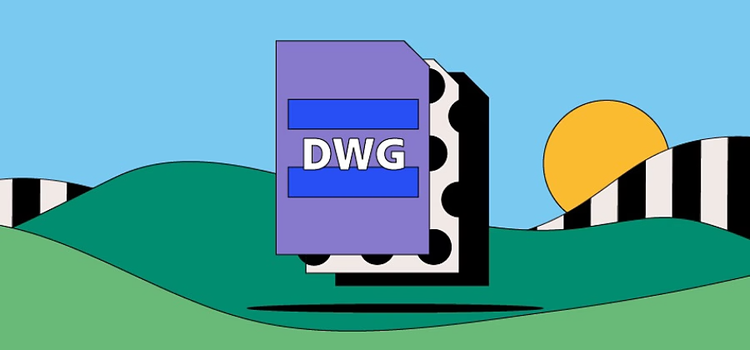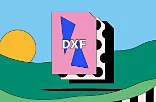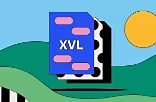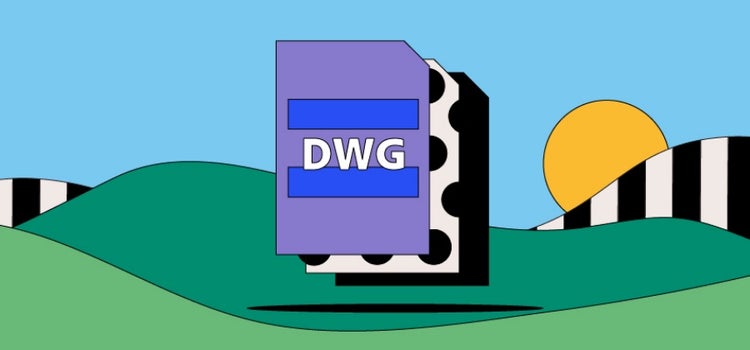DWG files.
Project engineers, designers and suppliers use the DWG file format to create technical drawings and blueprints . DWG enthusiasts swear by its standardised approach to architectural and engineering projects. Find out more about how to use DWG files.

What is a DWG file?
DWG files are closely associated with CAD (computer-aided design) programmes. Originally named as an abbreviation for the word drawing, it’s a file that contains two and three-dimensional vector graphics. Typically, drafters, architects and engineers use DWG files to develop design sketches.
There are several other file types associated with DWG, including:
- .bak
- .dws
- .dwt
- .sv$
This “open but proprietary” format serves as the building block for new projects across different industries - mainly digital engineering. The level of detail achievable is important for helping architects and engineers visualise designs. The files are readable on many programs — including those in Adobe Creative Cloud, like Illustrator.
History of the DWG file.
The team developing the Interact CAD package in the 1970s created the .dwg filename extension as the software’s native file format. As computers began to transform the design industry, the DWG file type was licensed for its first iteration in 1982.
As hardware became more powerful, so too did designers’ and architects’ imagination. The DWG file became the empty canvas from which world-changing ideas have sprung. Now with a variety of CAD programmes on the market, DWG has become more accessible to mainstream users.
What are DWG files used for?
The primary use for DWG files is drawing specialist blueprints and designs spanning a variety of industries. From engineers poring over the latest design specs for a new project to architects and town planners creating public spaces, a whole range of professionals rely on DWG files to bring designs into reality.
You’ll need specialist CAD software to open a DWG file. Once you do, you’re likely to find complex layers of detailed technical specs along with drawings and diagrams.
DWG files contain both vector images and metadata to support the designations of those vector images. This gives you the ability to fully flesh out your own 2D and 3D ideas on screen, rather than relying on off-book information to support your work.
Pros and cons of DWG files.
DWG may be the go-to for graphics when putting together new engineering or architecture projects, but there are a few drawbacks, too.
Advantages of DWG files.
- They are often considered the industry standardfor technical drawings and blueprints.
- The binary makeup of a DWG file makes it a smaller file by far than its leading rival DXF, which uses plain text. This makes it much more suitable for sharing with colleagues and saving on storage space.
- The real beauty of the DWG is its ability to map 2D and 3D images together, so the two versions are always compatible at different stages of design.
Disadvantages of DWG files.
- DWG has limited capability. DXF is a more widely supported file on CAD packages, which means collaboration between agencies and their clients tends to happen in DXF form.
- The DWG format has changed a lot over time. This means more than one version of the file extension currently exists, which can be confusing. Plus, older software may not recognise newer features built into later versions of DWG, making entire files potentially unusable.
- DWGs can’t be opened or accessed by anything other than CAD software without converting first. Again, this can be problematic when it comes to collaboration.
How to open a DWG file.
If you don’t need to make edits, you can use a DWG viewer to open the files. With the right software on your computer, you shouldn't have any trouble viewing your DWGs.
Here’s how you can open a DWG with Adobe Illustrator on desktop:
- Right-click on the image file on your desktop or file explorer window. (On Mac, press the COMMAND button and click the mouse button.)
- Scroll down to Open With, then scroll right to view the list of programmes that can open a DWG file.
How to create and edit a DWG file.
As mentioned, you need one of the CAD programmes to be able to create and edit a DWG file from scratch. However, if you’re using Adobe Illustrator, you can create a file and export it to DWG so it can be opened using CAD software.
Just follow these steps:
- From the File menu, select Open.
- Locate the file you want to open using the file explorer window.
- Click to open the file.
To export it as a DWG file, do the following:
- Choose File, then Export.
- Select a location for the file and enter a filename.
- Select the DWG format from the Save As Type (Windows) or Format (macOS) pop‑up menu.
- Click Save (Windows) or Export (macOS).
Remember, you may experience issues with versioning - so make sure your recipient can open the file.




